A question I am often asked is “why don’t you recommend aluminum for an exhaust material?” They continue, “so-and-so" has been running it on his car for years without any problems.” So let’s take a closer look at this topic. Exhaust tubes experience stress from a variety of sources including thermal stress, vibration, exhaust pressure, hitting the ground (usually when loading car on trailer), chassis bind etc… The combination of these stresses result in an applied stress to the tube material. As long as the applied stress is lower than the yield strength of the material, all is good in exhaust-land.
It is very difficult to calculate the stresses that an exhaust is subject to. So for this exercise, let’s consider the strength of some popular exhaust materials. The design strength of a material is usually based on the “yield strength” of a material. That is the level of stress when the material yields, or plastically deforms. As you can guess, the yield strength of steel is higher than of aluminum. This is the stress amount beyond which if the stress is relieved, it will not return to its original state (remember fighting with your brother over a slinky, if you pulled too hard, it would not return to its compact shape? You exceeded the yield strength of the metal.). It is customary to express the yield strength as the amount of stress needed to permanently deform the material by 0.2% of its original length. The ultimate strength is the stress when the material actually fractures. Engineers like to use materials where the ultimate strength is much higher than the yield strength as it usually provides an added margin of safety.
Let’s look at the yield strength in stainless, mild steel, CP-2 titanium, and aluminum. It is important to note that yield stress for metals is a function of temperature, with most metals becoming weaker (i.e. lower yield strength) with increasing temperature. Since the objective of this discussion is to determine what material should be used for the lightest exhaust pipe, it will be convenient to consider the specific strength of the different materials. Specific strength is simply the yield strength divided by the material density and is a measure of strength on a pound-per-pound basis. The material with the highest specific strength is stronger pound-per-pound.
The graph in figure 1 below presents the yield strength for 6061 aluminum, 304SS, and 321SS as a function of temperature. The annealed aluminum has relatively low strength throughout the temperature range. 6061-T6 aluminum however has great strength properties below 400F. The strength rapidly decreases and at 1100F, it has no strength as it is close to melting. In fact, it is interesting to note that at room temperature, 6061-T6 is stronger than the stainless alloys included. The two stainless alloys on the other hand do not show amazing strength at room temperature, but lose comparatively little strength over the temperature range presented. CP-2 titanium has very good strength up to around 800F. It is not recommended for continuous use over 800F or intermittent use over 1000F.
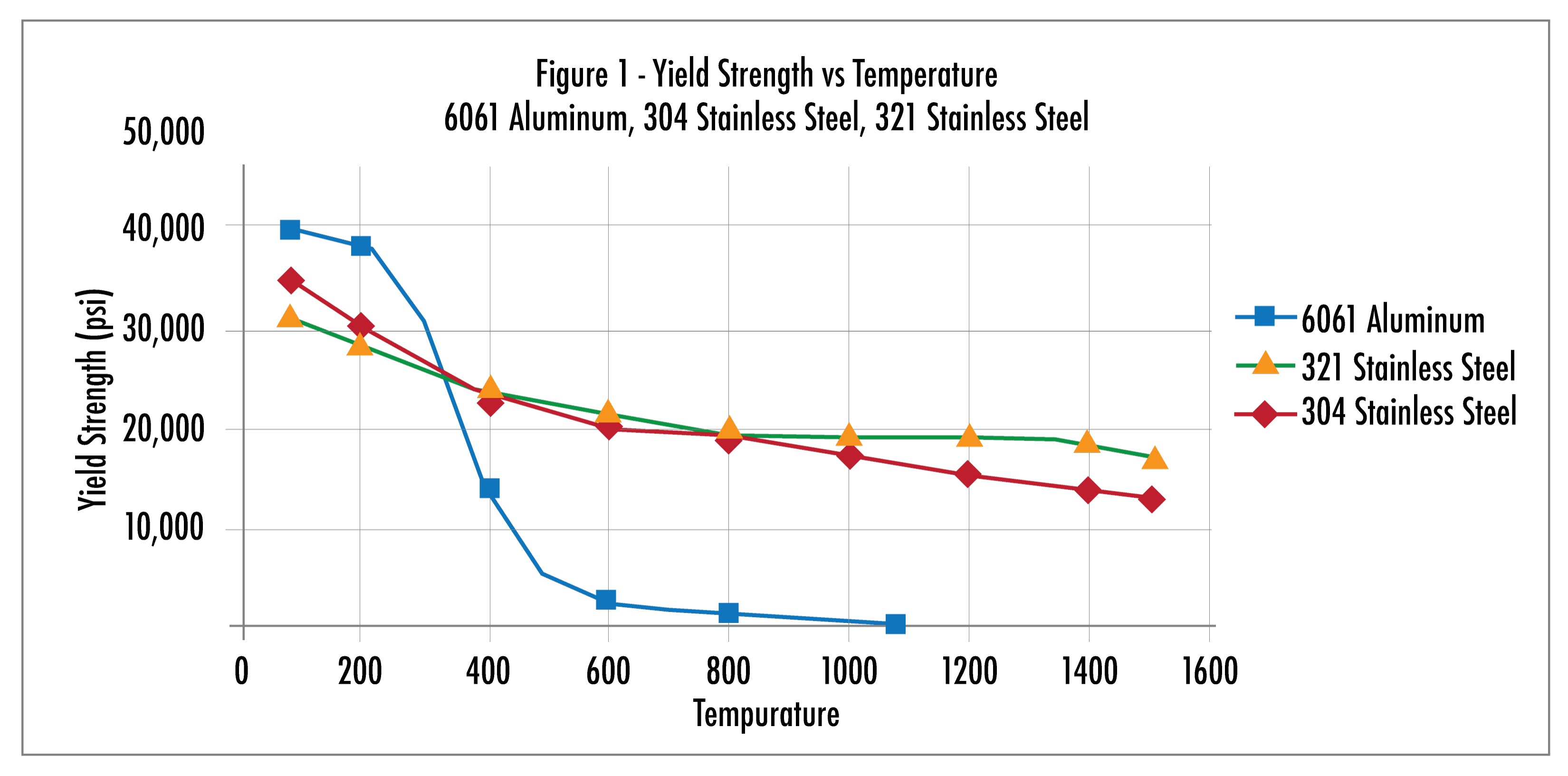 Considering the low density of 6061-T6 aluminum (0.098 lb/in^3) compared with 304 stainless steel (0.290 lb/in^3), pound for pound it is several times stronger than stainless steel – at least at room temperature. The specific strength of a material is defined as the strength of the material divided by the density. The specific strength is 460,000 lb-in/lb (45,000/.098) for 6061-T6 and 120,700 lb-in/lb for 304SS. Aluminum is nearly 4 times as strong as 304ss at room temperature. No wonder we would like to consider using aluminum for our exhaust! Figure 2 shows a graph of the specific strength for aluminum, CP-2 titanium, and stainless steel versus temperature. As you can see, pound-for-pound, aluminum is stronger than stainless until approximately 475F. Above that temperature, the tempered aluminum quickly loses strength. Based on the specific strength, CP-2 titanium is an excellent material for exhaust up to around 800F.
Considering the low density of 6061-T6 aluminum (0.098 lb/in^3) compared with 304 stainless steel (0.290 lb/in^3), pound for pound it is several times stronger than stainless steel – at least at room temperature. The specific strength of a material is defined as the strength of the material divided by the density. The specific strength is 460,000 lb-in/lb (45,000/.098) for 6061-T6 and 120,700 lb-in/lb for 304SS. Aluminum is nearly 4 times as strong as 304ss at room temperature. No wonder we would like to consider using aluminum for our exhaust! Figure 2 shows a graph of the specific strength for aluminum, CP-2 titanium, and stainless steel versus temperature. As you can see, pound-for-pound, aluminum is stronger than stainless until approximately 475F. Above that temperature, the tempered aluminum quickly loses strength. Based on the specific strength, CP-2 titanium is an excellent material for exhaust up to around 800F.

Another negative point for aluminum is that it is subject to failure from fatigue. Included in the graph in Figures 1 and 2 are values for room temperature fatigue strength for 6061-T6 and 6060-O for 5x 10^8 cycles. Fatigue strength is the strength of a material after being repeatedly stressed over many cycles. In other words, if a material is subjected to repeated loading and unloading with a stress much lower than the yield stress of the material, the material may fail if it is above the “fatigue strength.” Fatigue strength is usually expressed in terms of numbers of cycles. The values presented in the graph are for 5 x 10^8 (or 500,000,000) cycles. So what is 500 million cycles equivalent to?
Let’s consider the frequency of loading of an exhaust pipe. The exhaust pipe experiences loading from the engine, from road bumps etc… Let’s consider one of the loads, engine vibration. The rpm of the engine imposes a periodic load on the exhaust. Let’s consider a 4-cyl engine operating at say 2,500 rpm average. 500,000,000 cycles would be reached after 833 hours (500,000,000/ (2500*4)/60). At an average speed of 30mph, it is equivalent to around 25,000 miles. So it is highly likely that a street car exhaust would experience this number of cycles, so the fatigue strength value is the strength value that should be used in calculating the allowable stress of an exhaust pipe. Again, considering the density of aluminum, our design specific strength is 143,000 lb-in/lb – only 18% stronger than 304SS.
Finally, the discussion to this point has been for 6061-T6 material. In order to bend aluminum, it is usually annealed to the “O” condition, reducing the yield strength of the aluminum. On top of that, when tubing is welded, it is no longer in the T6 condition. So the design strength is reduced to the fatigue strength of annealed aluminum, or 9,000 psi. On a pound-for-pound basis, the specific strength is now 91,850 lb-in/lb – or 24% less than 304SS! This means that an exhaust tube made from annealed aluminum would be 24% heavier than one with equivalent strength made from 304SS! This is due to the fact that Note that thus far, we have not even considered the reduced strength of the aluminum at elevated temperature. Now, it is possible to heat treat the aluminum bends or fabricated tube, but it is often not done. Also, if the tube is heated, as when running hot exhaust gas, it will change the temper and reduce its strength.
Note that that the temperature listed is the actual metal temperature and not the exhaust gas temperature. As engine guys, we often know what the exhaust gas temperature is, but the metal temperature is actually somewhere between the ambient temperature and the exhaust temperature. Again, calculating the metal temperature is a complicated heat transfer analysis and beyond the scope of this article, so we will have to rely on some actual measured temperatures at various locations on an exhaust system. It is our experience that the metal temperature for a stainless steel header is between 1,000F and 1,800F. When a header glows red, it is safe to assume the temperature is over 1600F. Looking at our material strength graph, aluminum is definitely out of the question in this region.
Typical tailpipe temperatures are between 300F and 700F. Therefore, a case can be made that aluminum could be used in this range for a low-cycle application (i.e. not limited by fatigue) such as racing when periodic replacement of the tailpipe would not be a problem. So, is it worth using aluminum? Let’s consider a 2-1/2” OD tailpipe that is 10’ long and a metal temperature of 300F. Aluminum 2-1/2” OD x 16g tubing is currently priced at $17.54/ft and weighs 0.58lb/ft. 304SS, 2-1/2” OD x 20g tubing is $18.18/ft and weighs 0.94 lb/ft. Note that at this time, 2-1/2” OD x 20g 304ss is not available. The aluminum tailpipe would weigh 5.8 pounds and cost $175.40 and a stainless one would weigh 9.4 pounds and cost $181.80. It should be noted that though the aluminum tube is lighter, it has a thicker wall due to the lower density of aluminum compared with 304ss.
In this example, cost is a non-issue. From a weight standpoint, the aluminum tailpipe would be 3.6 pounds lighter – nothing to sneeze at. But, what about the strength? Using the column strength of the tube as a guide, the tensile strength at 300F of 6061-T6 is approximately 34,000 psi and the strength of 304SS is approximately 26,000 psi. Multiplying by the cross-sectional areas of the tubes, the strength of the aluminum tailpipe is 16,900 Lb vs. 7,050 lb for 304SS. The choice in this case would be aluminum assuming it has been fully heat treated to T6 strength. Let’s now look at the strength at 500F. The strength of aluminum is 5,000 psi and 304SS is 22,000 psi resulting in column strengths of 2,485 lb and 5,960 lb respectively. Decision clearly goes to stainless. Now, it is not to say that the aluminum is not strong enough for the application only that at this temperature, the thinner stainless tube is stronger. Though it would be an excellent candidate, titanium has been excluded from the discussion since it is very difficult to source in the necessary sizes.
So, in conclusion, it appears that for temperatures below approx 475F, an aluminum tailpipe in a low frequency usage application such as a drag car, one could make a good case for using an aluminum tailpipe. However, it is imperative that the metal temperature of the tailpipe be well known, since above 475F, the strength of aluminum decays rapidly with temperature. The above analysis has been rigged in favor of aluminum in assuming that the tailpipe has been treated to T6 and that fatigue has been ignored. In the real world however, many factors are present that could affect the aluminum strength. It will still be our policy to not recommend aluminum for tailpipe applications.




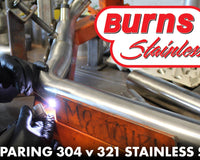

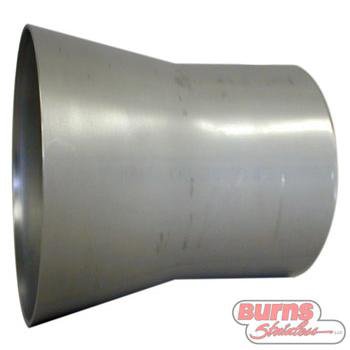
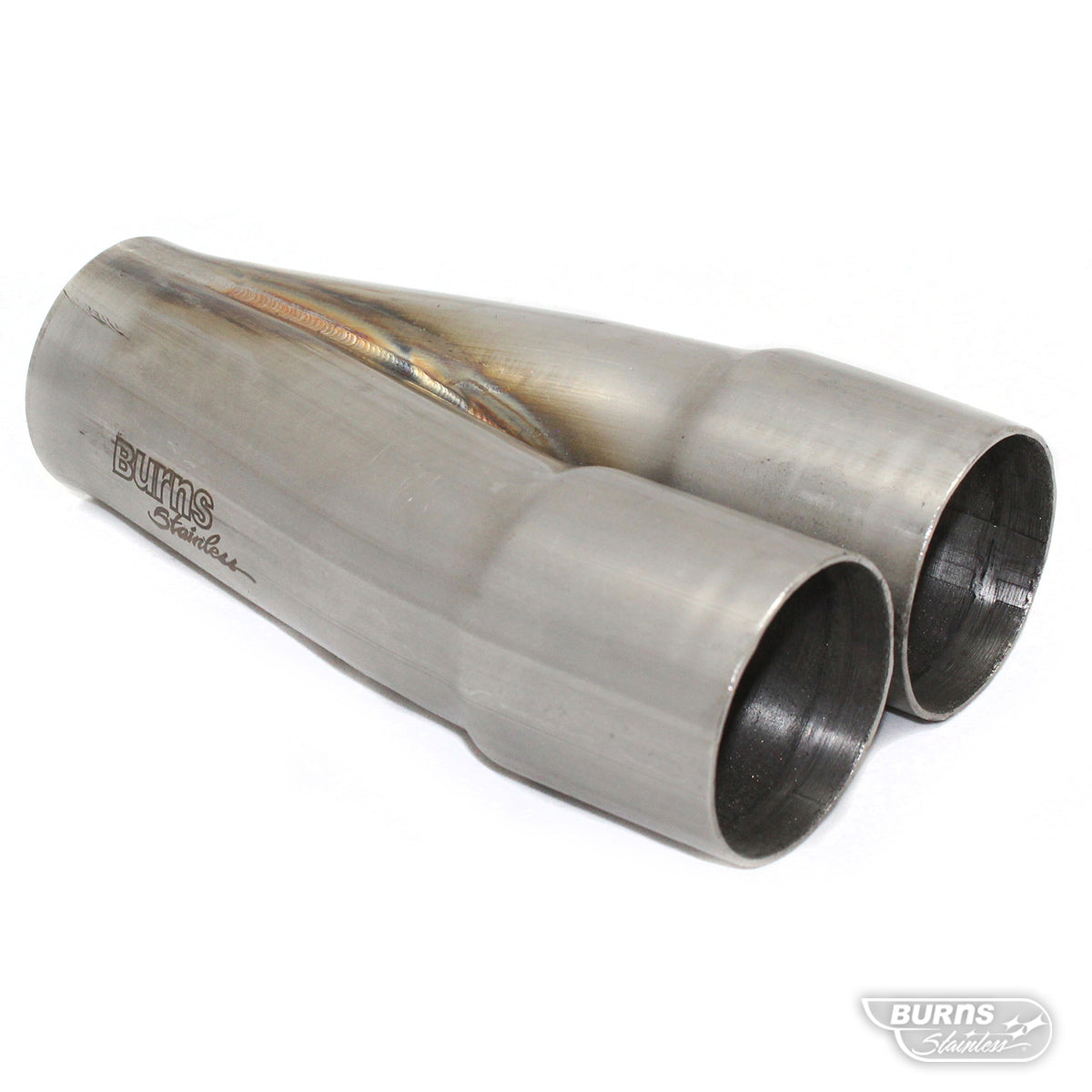


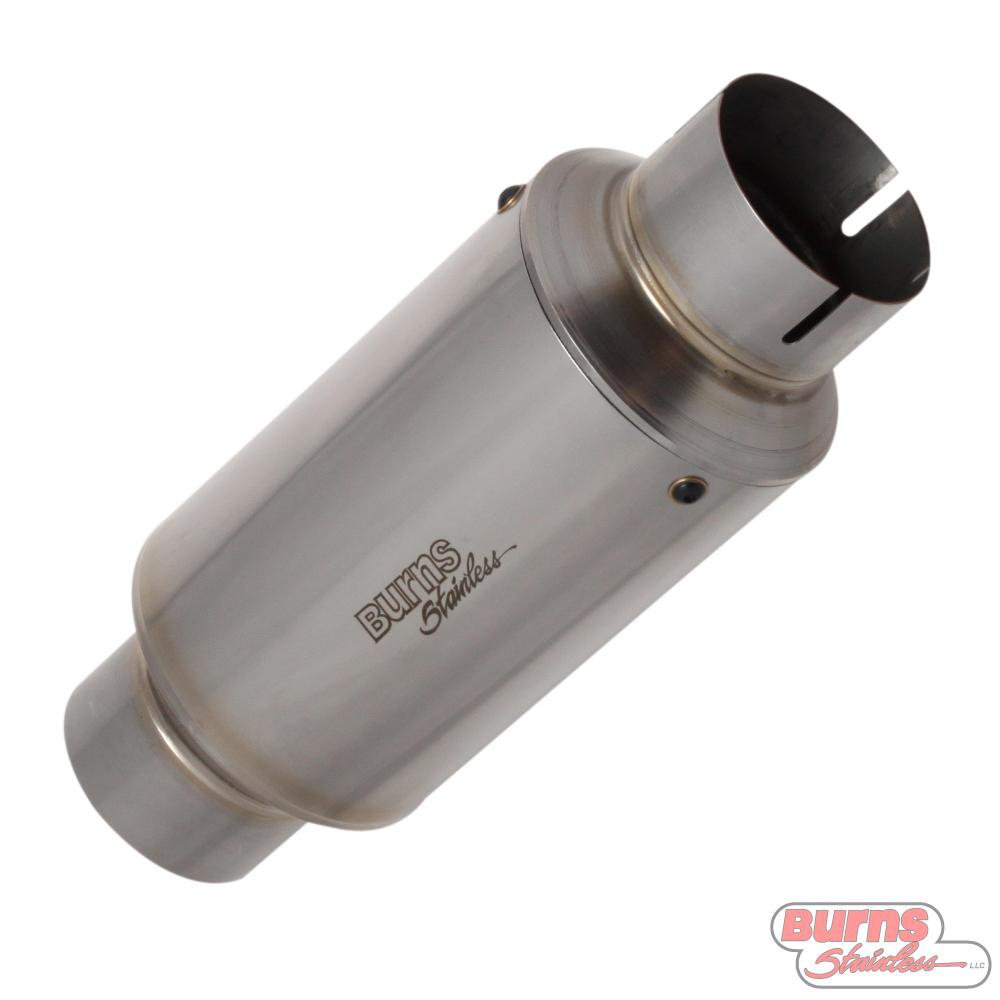
4 comments
John Clark
This discussion of the thermal real-life properties of aluminum are pertinent in many areas on race cars. A good worthwhile read. I would have liked a little more discussion on the subject of thermal fatigue and how heat gradients play a part in material selection.
Jared
Thanks for the insightful article. It answers some questions I had on this topic.
Tim C King
Thanks. Excellent information and well presented.
Christian Paez
Excellent article!